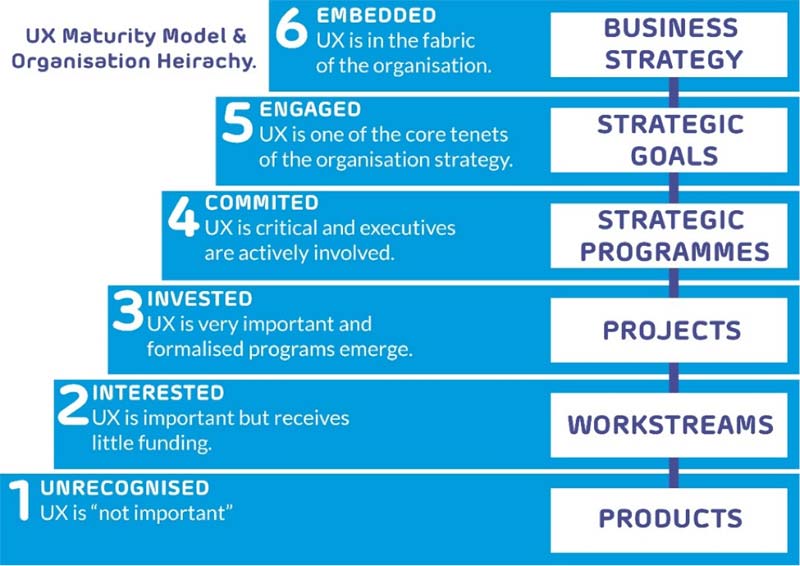Meeting the accessibility maturity challenge
In this follow-up to his article advocating a holistic accessibility approach, accessibility specialist Chris Bailey encourages organisations to take up the accessibility challenge.
I believe that if there’s plenty of collective accessibility knowledge and desire in industry today. If every team member does their bit, organisations can benefit from more advanced levels of accessibility maturity.
No single individual can fully address this challenge on their own: success is all about the teamwork and organisational commitment needed to pull the various pieces together.
It’s time to move on
10-15 years ago, UX was generally considered as an afterthought. In the main, this isn’t true anymore, as people responsible for UX are now in senior positions in the corporate hierarchy. Accessibility could be considered to be where UX was a decade ago; we need to move with the times!
The model below illustrates how organisations have achieved UX maturity. In the past, many organisations stood at Level 1, as they would only consider UX at the end of a project lifecycle, testing products just before launch. However, things have changed over the years and many organisations now stand at Levels 4,5 and 6.
Accessibility: where does your organisation stand?
Applying the same model to accessibility, many organisations are currently at Level 1. Products are audited and tested for accessibility near the end of the development lifecycle, so problems can be costly and/or require significant product changes to resolve.
There’s an obvious parallel with the way organisations tackled UX testing 15 years ago: it could be said that we haven’t learned our lesson!
Accessibility maturity
Organisations need to accelerate progress towards ‘accessibility maturity’, and the UX example provides a clear roadmap for change. Some of the larger technology companies are already at level 4 accessibility maturity, and other industry sectors need to emulate this progress.
The first and most important thing an organisation can to do is to commit to accessibility. Apple provides an example of what can be achieved. It has firmly embedded accessibility into its business strategy, and as a result iPhones are incredibly popular among visually impaired users. Apple devices have many accessibility features, like VoiceOver, the built-in iOS screen reader that provides a great user experience.
Apple product users enjoy a great experience because Apple build accessibility in to their hardware and software from the very start. As Tim Cook, Apple’s CEO said,
“When we work on making our devices accessible by the blind, I don’t consider the bloody ROI.”
It’s clear that the desire for Apple’s products to be accessible comes right from the top of the organisation – and the company has achieved monumental success. They just might be onto something…

Receive expert help to improve accessibility


